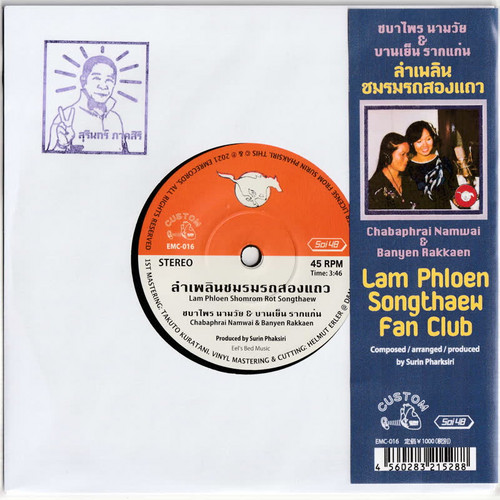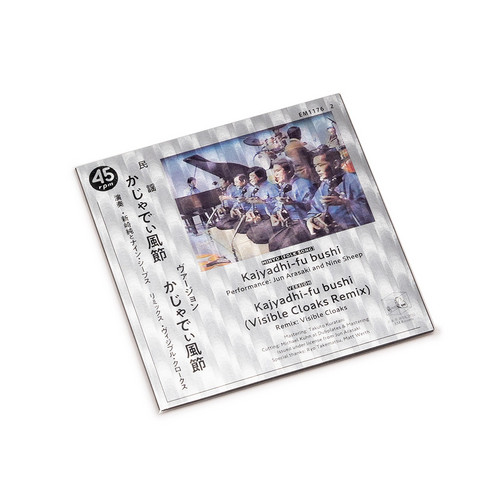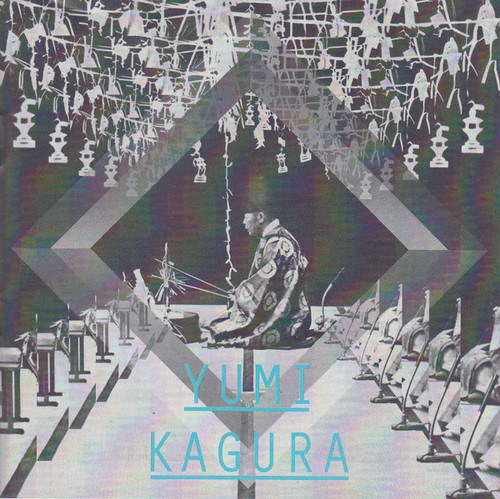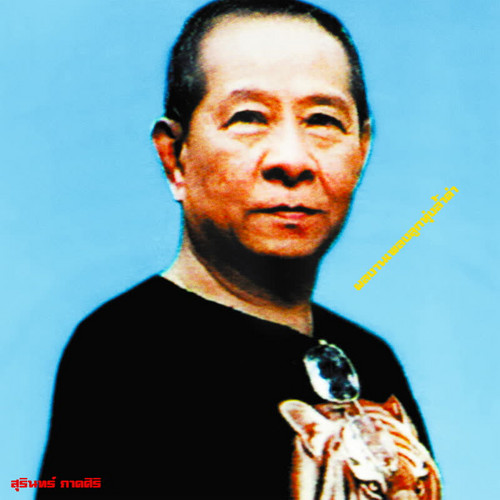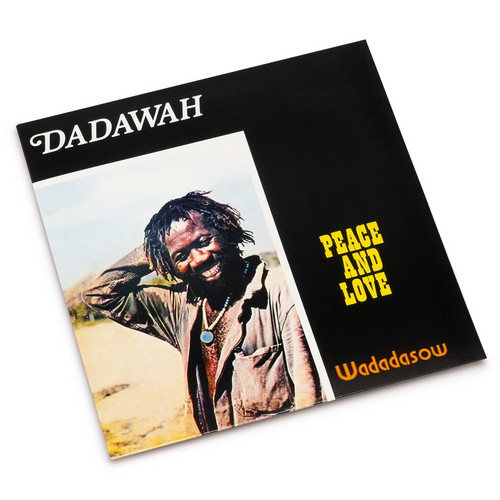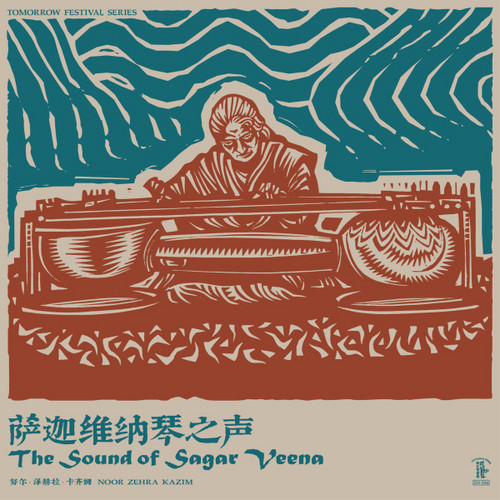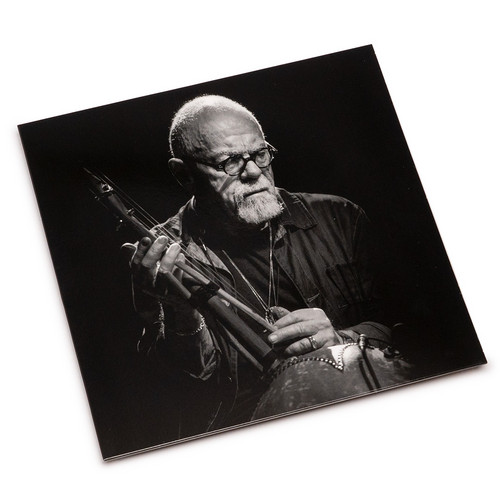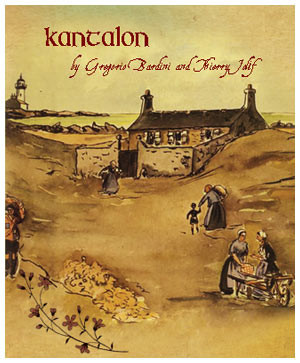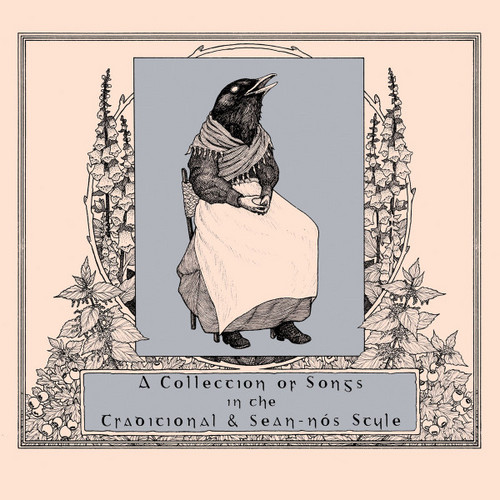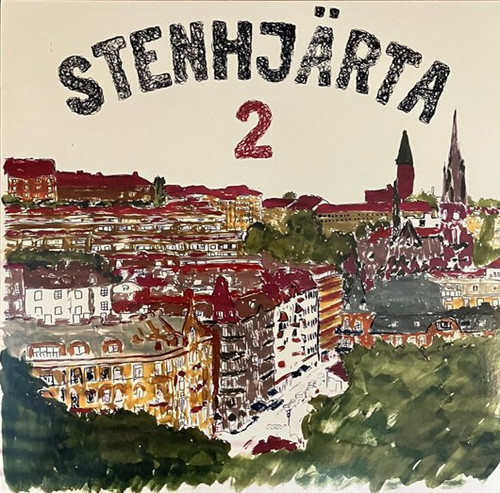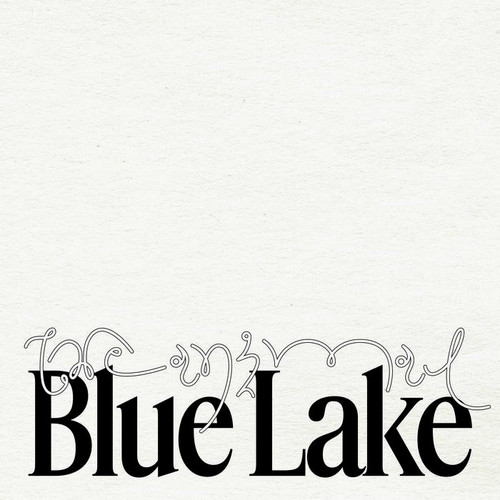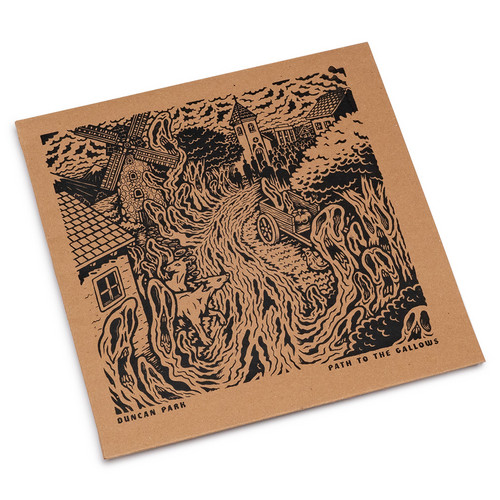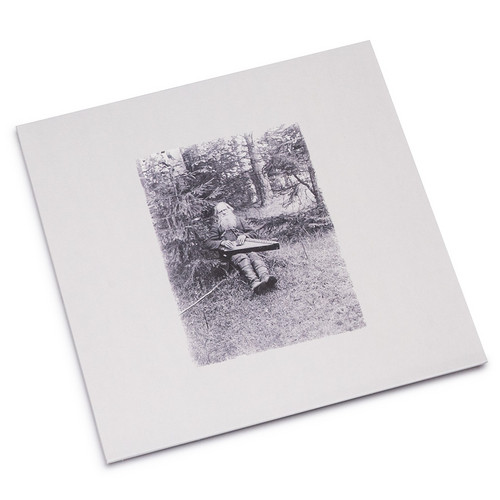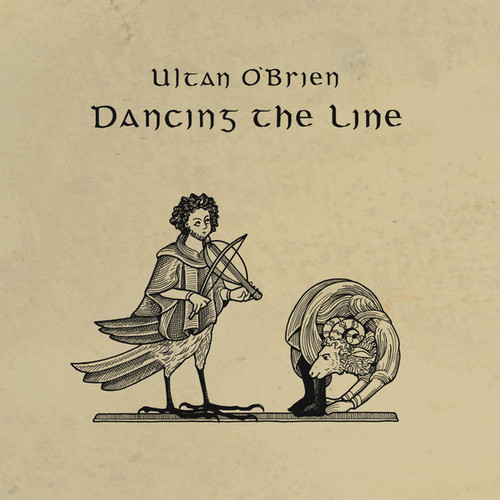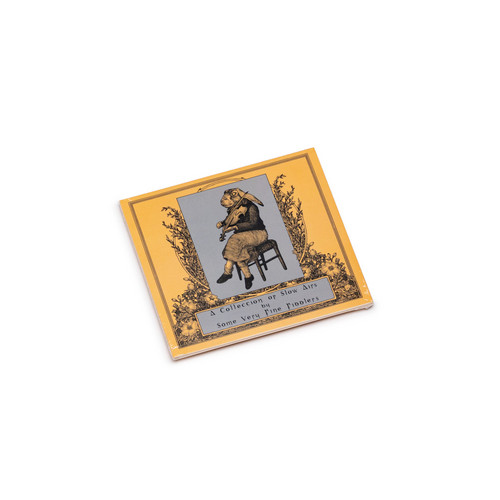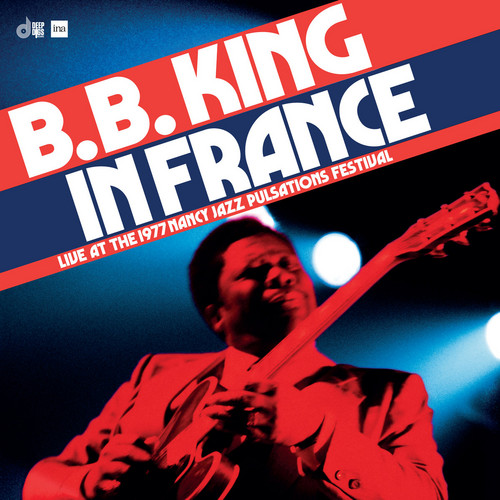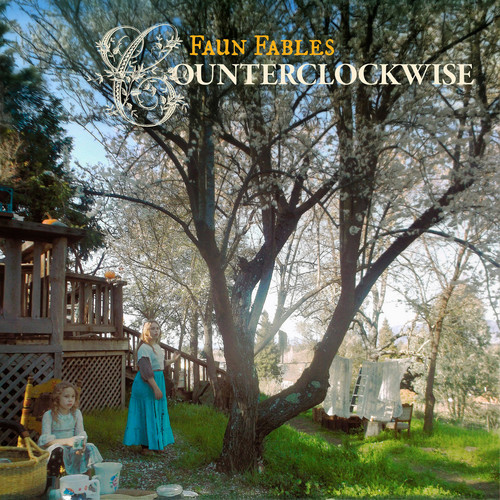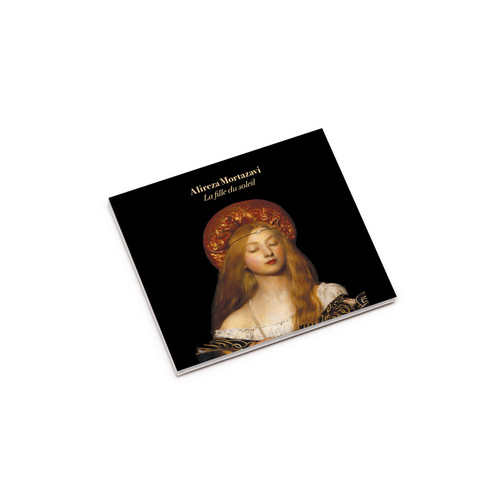Folk /
Lam Phloen Songthaew Fanclub
A one-sided 7" single! A great and rare song, never before reissued, an early 80s electric molam classic produced by Surin Phaksiri. This release celebrates "Classic Productions by Surin Phaksiri 2: Molam Gems from the 1960s-80s", an upcoming EM Records compilation spotlighting this legendary producer; however, this song will not be available on the compilation, so get the vinyl or DL, and don't miss this groovily swaying paean to the pick-up truck share taxi, performed by Chabaphrai Namwai and …
Kajyadhi Fu Bushi
"This was traditional, transformative music, and music that made so much sense coming from EM's epicenter."― Matt Werth
Printed on special paper embossed with matte silver aluminium foil. Please consider the jacket illustration as an image as the texture of the original cannot be reproduced graphically. The disc is a translucent coloured disc with the image of the Okinawa sun.
A charming set of double transformations on this 7 inch. "Kajyadhi Fu Bushi" is a traditional Ryukyu minyo (Okinawa fol…
Yumi Kagura
"Deep session! It is rare to hear folk music from Japan in such beautiful fidelity and incredible dynamics. This recording is intensely gorgeous and hauntingly disarming. This should open up a whole new world of adventurous listening for folks outside (and inside!) Japan."―Brian Shimkovitz
"Sounds absolutely great! Super interesting and engaging."―Ben UFO
"Just Give Me That Old Time Religion, It's Good Enough For Me."―Japan Blues
A hotline to the gods! Kagura is a thousand-year-old form of Japa…
Classic Productions by Surin Phaksiri: Luk Thung Gems from the 1960s-80s
This collection of 12 luk thung (*1) songs from the 1960s-70s, all produced by Surin Phaksiri, is a superb showcase of cross-genre/multi-national fertilization, with Latin, jazz, western pop, Indian and Japanese music seamlessly melding with the musical culture of Isan (northeast Thailand), which is strongly rooted in Laotian culture; indeed, the Isan language, as featured in these songs, is a form of Laotian. Esteemed producer Surin Phaksiri, an Isan icon, always strove to drive Thai music forw…
Peace And Love - Wadadasow
Michael George Henry (aka Ras Michael and, for this lone release, Dadawah) was born in 1943 in Saint Mary Parish, in northeastern Jamaica. Henry was raised in a Rastafari community when the religious movement was still in its infancy and marginalized within Jamaica. It was there that he began performing Nyahbinghi, the Rastafarian devotional music that combines the influences of African drumming and Black gospel. Henry found himself in Kingston in the late 1950s where he worked for Coxsone Dodd …
The Sound of Sagar Veena
Tip! The Sahaja Veena is a stunning stringed instrument with a unique and beautiful design reminiscent of the Vichitra Veena and Chitra Veena. With a wider range than the traditional Indian veena and a deep, warm sound, the instrument can produce compelling melodies and delicate ornamentation, often evoking deep emotions, and is therefore also known as the “Sagar” (‘Sagar’ meaning “sea” in Hindi). “(Sagar means ”ocean" in Hindi).
Noor Zehra Kazim is the world's only Sagar Vina player. Her father…
Christer Bothén Donso n’goni
Black Truffle is thrilled to present the first ever solo Donso n’goni recording from octogenarian Swedish multi-instrumentalist Christer Bothén. Active in the Swedish jazz and improvisation scene since the 1970s, often heard on bass clarinet, Bothén travelled to Mali in 1971, eventually making his way to the Wassoulou region in the country’s south where he encountered the Donso n’goni, the sacred harp of the hunter caste of Wassoulou society. Though playing the instrument has traditionally been …
Kantalon
2009 release ** Limited edition of 500 hand-numbered copies in oversized cardboard sleeve. "Italian flautist Bardini and French noisemeister Jolif have united to celebrate the music and culture of the Breton nation. With few exceptions, most of the lyrics are taken from traditional songs, but set to their own music. It need not be said that this is largely in the Breton tongue. The downbeat tune is envisioned through the prism of post-industrial, with light effects alongside the primary backbone…
A Collection of Songs in the Traditional & Sean-Nós Style
Nyahh Records is proud and excited to announce this compilation of singers, which has been on the back boiler for some time!! Inspired by the song collecting of Alan Lomax, this compilation brings together two generations of singers from all across the island of Ireland. Some of the songs previously appear on albums, but the rest were recorded by the singer themselves on their phones to give the song a real and raw effect that brings an authentic feel and immediacy to the songs.
A long standing …
Stenhjärta 2
The second album from Stenhjärta follows up Gryning Kommer Röd (Grapefruit Records, 2024) and very much continues in the same vein while approaching a rather damn catchy pop song format at times. Fear not, Stenhjärta is still a group heavily rooted in the Swedish prog/folk tradition of the 70's, the 13 songs here just showcases a somewhat wider scope, the duo taking things a notch further with more elaborate songwriting and a whole slew of wonderful A-sides along the often damaged ride. Lyricall…
The Animal
Blue Lake reveals his most ambitious album yet, which finds its visionary creator Jason Dungan harnessing the collective alchemy of his band, with ten spirited tracks that resonate with a powerful directness, evoking an ecological connection to the wider world.
Path To The Gallows
Path To The Gallows was recorded in Beeston, UK and Durban, South Africa straight to cassette and engineered by the wizard Rob V. It's Duncan's 9th "proper" album (but could also be his 12th or 6th depending how you count them).
Teppana Jänis & Arja Kastinen
Teppana Jänis was born in the village of Uuksujärvi in Suistamo on 21 June 1850. After becoming blind in the late 19th century, he went house to house, supporting himself by playing the kantele, a traditional Finnish and Karelian plucked string instrument belonging to the southeast Baltic box zither family. He performed at dances and in schools, and also participated in the Suistamo kantele and runosong competitions in 1911.
In the summers of 1916 and 1917, the young folk music researcher Armas …
Yavireri: Los que viven en lo profundo
Yavireri - a Matsigenka word that can be understood as "those who live in the depths" - describes the spirits of the forest and those who, from within the jungle, sustain a way of life rooted in listening, vision, and oral tradition.
Dancing The Line
Ultan O’Brien is a fiddle player and composer from the wilds of County Clare in the West of Ireland. Ultan is a performer as well as a regular at sessions all of Ireland and can be found by chance in any pub in Dublin, Cork or some remote village on the edge of nowhere, flying jigs and reels around the room. Ultan was reared in the rich tradition of Irish music which is so commonly found and heard in Co Clare, but he also delves deep into sound art and experimental music.
He has often been heard…
A Collection Of Slow Airs By Some Very Fine Fiddlers
Nyahh is honoured to be able to present this collection of airs to you from some of Ireland’s best fiddlers.
In France (Live At The 1977 Nancy Jazz Pulsations Festival)
2025 stock In France: Live at the Nancy Jazz Pulsations Festival (1977) is a previously unissued live recording from the legendary bluesman B.B. King captured by the Ortf in France on October 7, 1977 and released on producer Zev Feldman’s Deep Digs label in partnership with Elemental Music and INA France. The limited-edition 180-gram 2-lp set will be mastered and cut by Matthew Lutthans at The Mastering Lab, and include rare photos by Thierry Trombert, Val Wilmer, Jan Persson and more; plus line…
April Is Passing
2025 stock Second VHF solo LP from the Pelt/Black Twigs mainstay, following 2022’s acclaimed “Evening Measures.” “April is Passing” builds on the striking solo Hardanger-style fiddle performances on the previous LP to take the music even further out, with deep drones and extended techniques defining a vocabulary that is Americana-adjacent, but a unique and special sound that Mike Gangloff is pursuing almost alone. Joined on selected tracks by Cara Gangloff’s Sruti and Kaily Shenker’s sonorous Ce…
Counterclockwise
Faun Fables’ most encompassing collection of “songtelling” to date: a true family album, etched exquisitely and studded with fine-hewed jewels of song. The richly lived-in atmosphere is a sonic world unto itself. Timeless folk music, warmly redolent of traditions passed down in an eternal recurrence that promises renewal – the a joyous counterclockwise movement spread over generation upon generation.
La Fille Du Soleil
"I discovered Alireza through Markus Stockhausen, then I eventually published an album of the duo, Hamdelaneh, plus one in trio with Lino Capra Vaccina. I was struck by Alireza’s absolute virtuosity, never an end in itself, his impressive musicality, his ability to listen to sounds and silences. His music, like his approach to santoor, is truly revolutionary, personal, spiritual, innovative and yet... for those who, like me, love the immense heritage of traditional Persian music, perceive its ro…
